The House Armed Services Committee passed its annual defense bill on Thursday after a 14-hour markup, sending the bill to the full House of Representatives with no major changes to its recommended procurement profile.
Though few amendments that passed directly affect Navy and Marine Corps programs, several that failed or were withdrawn sparked serious debates about how the Navy ought to address pressing issues of the day: hypoxia concerns in the Navy’s fighter fleet, how to transition from the Littoral Combat Ship, industry’s ability to upgrade to the Flight III guided-missile destroyer design and more.
The following are highlights from the debate during the Fiscal Year 2018 National Defense Authorization Act markup.
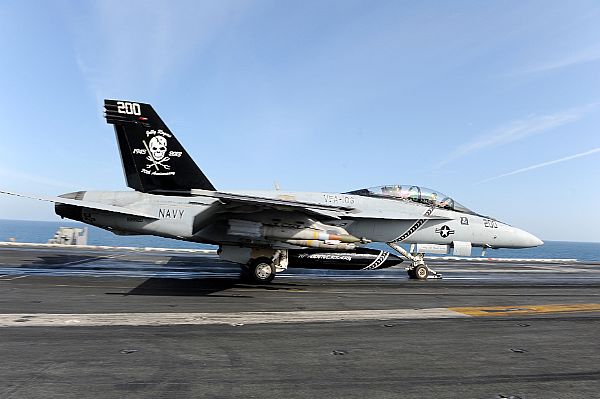
Hypoxia
Rep. Niki Tsongas (D-Mass.), the top Democrat on the tactical air and land forces subcommittee, offered and ultimately withdrew an amendment that would have prohibited any further F/A-18E/F Super Hornet procurement until the secretary of the Navy reviewed the recommendations in the Navy’s recent report on physiological episodes, the Navy developed plans and found funding to address those recommendations, various cockpit systems were redesigned or re-integrated, and more.
Tsongas spoke about the Navy’s PE report, noting that the report ties four pilot deaths to physiological episodes and finds that the Onboard Oxygen Generation System (OBOGS) integration with the rest of the jet is not sufficient to “consistently provide high-quality breathing air.”
“The situation we now face is a difficult one: we know we need more F-18 aircraft, but we also now know that the Navy has concluded the F-18’s design in a critical area of aircraft life support is flawed and must be redesigned,” she said.
Tsongas said she was withdrawing the amendment because she hoped that by the time the defense bill worked its way through the Senate and was signed by the president – usually in December – that the Navy will have addressed the issues found in the PE report and that congressional funding for Super Hornets – HASC recommended $1.8 billion for 22 planes, Tsongas noted – “will not end up procuring aircraft that have a serious built-in defect in the area of pilot life support, which is where things stand today. While I know the Navy needs new planes, pilots serving on our behalf must be able to trust the design of the aircraft they are asked to fly into combat.”
This amendment, though not put up for a vote, drew bipartisan support. TACAIR subcommittee chairman Rep. Michael Turner (R-Ohio) voiced support for her work on the issue. He said the HASC took some small steps on the issue of physiological episodes in this year’s bill but that a lot of work remained.
“In this bill we have a provision demanding that the Navy aggressively take action to address this, we’ve asked the Air Force to expedite hypoxia research, and we also have put $10 million in for the Navy’s aircrew systems development program that is a sensing program to determine whether low oxygen levels or toxins are present,” he said.
“This is a very serious issue. … We certainly know that in the time we’ve been working with the Navy, their response has been insufficient and we’re going to continue to work to ensure that we are focused on what this is, a pilot safety issue.”
HASC chairman Rep. Mac Thornberry (R-Texas) said, “if there is anything any of the members see that this committee can do to fix this problem as fast as possible then I’m on board because it needs to be fixed.”
Ultimately, though Tsongas’ amendment to withhold funding was withdrawn, a similar amendment was passed as part of a non-controversial “en bloc package” of amendments agreed to in advance by subcommittee leadership. This amendment asked for all the same information from the Navy secretary, which would be included as an addendum to a report the Navy already owes the committee in December, and funding restrictions would not be attached.
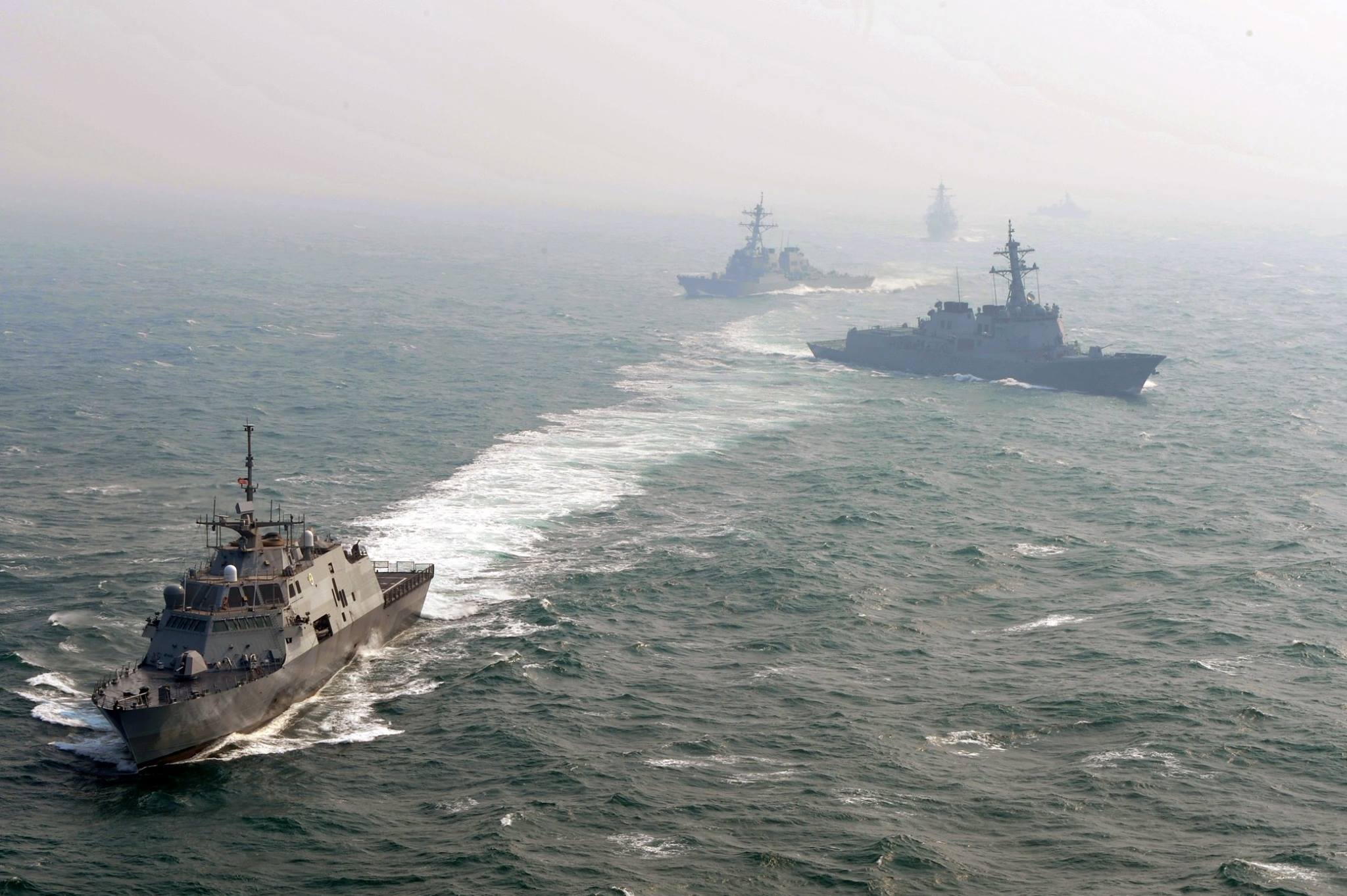
Littoral Combat Ships
After the Pentagon initially asked for just one LCS in its budget request but then asked for a second ship the very next day, HASC chose to authorize three ships in its bill.
Rep. Seth Moulton (D-Mass.), a former infantry Marine, offered an amendment to fund just two ships in 2018 and use the funding for the third ship to instead pay for munitions needed in U.S. European Command and U.S. Pacific Command. The amendment ultimately failed but drew a heated 30-minute debate about the ship program.
“Three weeks prior to the budget being released, [Office of Management and Budget] Director Mick Mulvaney acknowledged that ‘the Navy doesn’t want them,’ referring to the LCS,” Moulton said, referring to a radio interview with conservative radio show host Hugh Hewitt.
“The second and third ships that the Navy did not request are being funded from [the Overseas Contingency Operations] funds that were never intended to be permanent and never intended to be used for long-term shipbuilding. Moreover, the LCS program continues to face serious shortcomings. At a June 2017 Senate Armed Services Committee hearing, Chairman Sen. John McCain stated unequivocally, ‘one of the greatest disasters I have seen recently was the LCS.’”
Moulton cited rising costs and delays in the mine countermeasures and anti-submarine warfare mission packages and said that, instead, “both combatant commands have identified present needs for munitions replenishment that seem to me, as a humble Marine infantry officer, more pressing and appropriate for this committee to fund than additional ships that go beyond the Navy’s request and do not get us closer to the frigate replacement that will correct many of the LCS’s shortcomings.”
He concluded that buying a third LCS in 2018 would be a “congressional boondoggle that more supports “parochial congressional district politics than the needs of our sailors.”
“We are forcing on the Navy a ship they do not want, a ship they do not need and a ship they did not request”
Seapower and projection forces subcommittee chairman Rep. Rob Wittman (R-Va.), along with Reps. Mike Gallagher (R-Wisc.) and Bradley Byrne (R-Ala.) who represent the two shipyards that build LCSs, jumped at the opportunity to defend the program and the need to fund three a year.
“Producing at this level allows us to bring cost down, to deliver the ships that the Navy needs. If we take out of production one of these ships, we increase cost by about 10 percent,” Wittman said. He said there was a “very thoughtful plan” to get from today’s LCS to the upgraded frigate design in 2020, and “funding this additional ship gets us there” by keeping the two shipyards healthy and viable as frigate competitors.
If the third LCS funding were transferred to munitions accounts, he charged, “you’re going to let money sit idle. In this mark there is money to fully fund production munitions for both EUCOM and PACOM at the production capacity today. So this is throwing good money to bad; you can’t execute this money because there’s not capacity or capability” in industry to build munitions at any greater rate than the bill already funds.
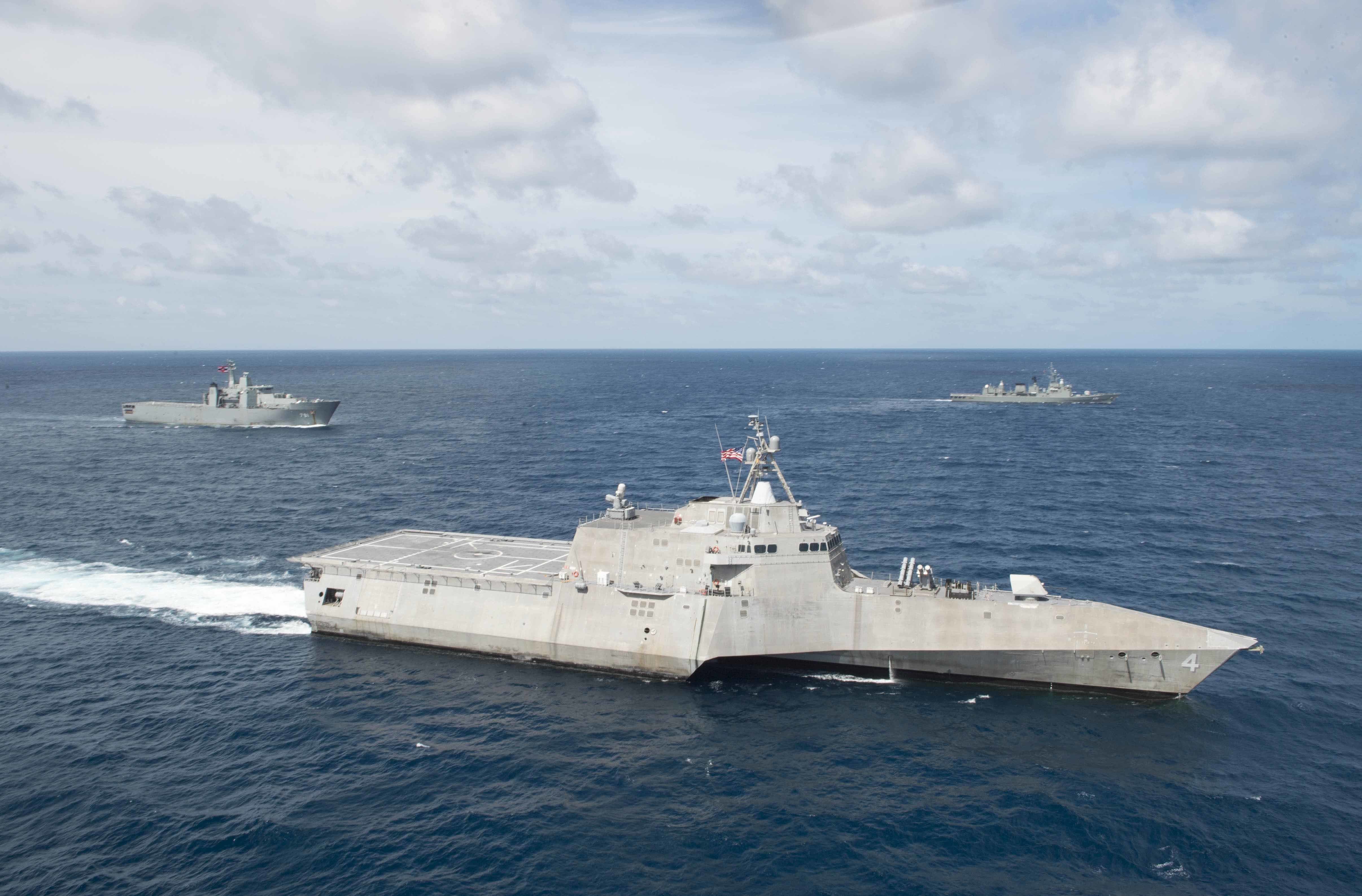
Byrne, whose district includes the Austal USA shipyard in Mobile that builds the Independence variant, said buying three LCSs a year keeps a healthy industrial base; the amendment would lead to layoffs of 10 to 40 percent throughout various parts of the workforce on the LCS program, extended production timelines, and increased unit costs of 10 to 15 percent, or about $50 to $70 million annually.
“The labor force is not a spigot; when you turn it off you cannot just turn it back on again,” he said.
“People go and find other jobs, go to other places. Three ships ensures the skilled workforce that has been built at both shipyards will remain in tact and be poised to produce LCS and future small surface combatants on time and under cost caps.”
Gallagher, whose district includes the Marinette Marine yard that builds Lockheed Martin’s Freedom variant, gave an impassioned defense of the ship and the three-a-year buy rate.
“LCS is not only an ideal platform from which to employ unmanned systems, which are only going to increase in importance in the future, they can simply go places where bigger ships can’t,” he said.
“Rear Adm. Don Gabrielson, the commander of Logistics Group Western Pacific, put it, Littoral Combat Ships can go places and do things that no other American ships can, with flexible large payloads that enable easy integration with regional navies for both military and humanitarian missions. There are over 50,000 islands across a broad arc from the Philippines to Sri Lanka. Larger ships can only visit 50 ports across this entire territory; LCS can dock at over 1,000 ports.”
Gallagher cited quotes from Acting Navy Secretary Sean Stackley, Program Executive Officer for LCS Rear Adm. John Neagley, PACOM Commander Adm. Harry Harris and more, all in support of the program, and argued that Mulvaney’s comments on the radio about the Navy not wanting the ships is “patently false.”
“If you look at what the Navy’s actually said, the 4th Fleet wants the ship, the 5th Fleet wants the ship, the 6th Fleet wants the ship, the 7th Fleet wants the ship. It’s time to listen to what our warfighters are saying and continue building the fleet to meet their operational requirements,” Gallagher concluded.
Still, HASC ranking member Rep. Adam Smith (D-Wash.) cited this debate as an example of parochial politics and the committee’s inability to trim military spending, even despite the Budget Control Act and the subsequent spending caps – this NDAA pays for the third LCS in the OCO budget, which is not subject to spending caps.
“LCS is a very controversial program; I don’t personally support eliminating it, I think Mr. Wittman made some good arguments about why LCS is important. But as Mr. Moulton pointed out, we’re not getting rid of it,” Smith said of the trim from three to two hulls.
“Is it better to have three LCSs in the abstract? Sure. But we’re making choices here, and I compliment Mr. Moulton for offering up what I think is a better choice for where we should spend our money. And if this is what we do in this committee, if every time we try to cut anything … every time we try to find savings anywhere, there’s somebody, no no no no no, we have to have that, we have to have that ship, that plane, this number of troops, it doesn’t add up. At some point, we in this committee, if we are committed to supporting the military we keep claiming we are, we have to make a choice to cut something.”
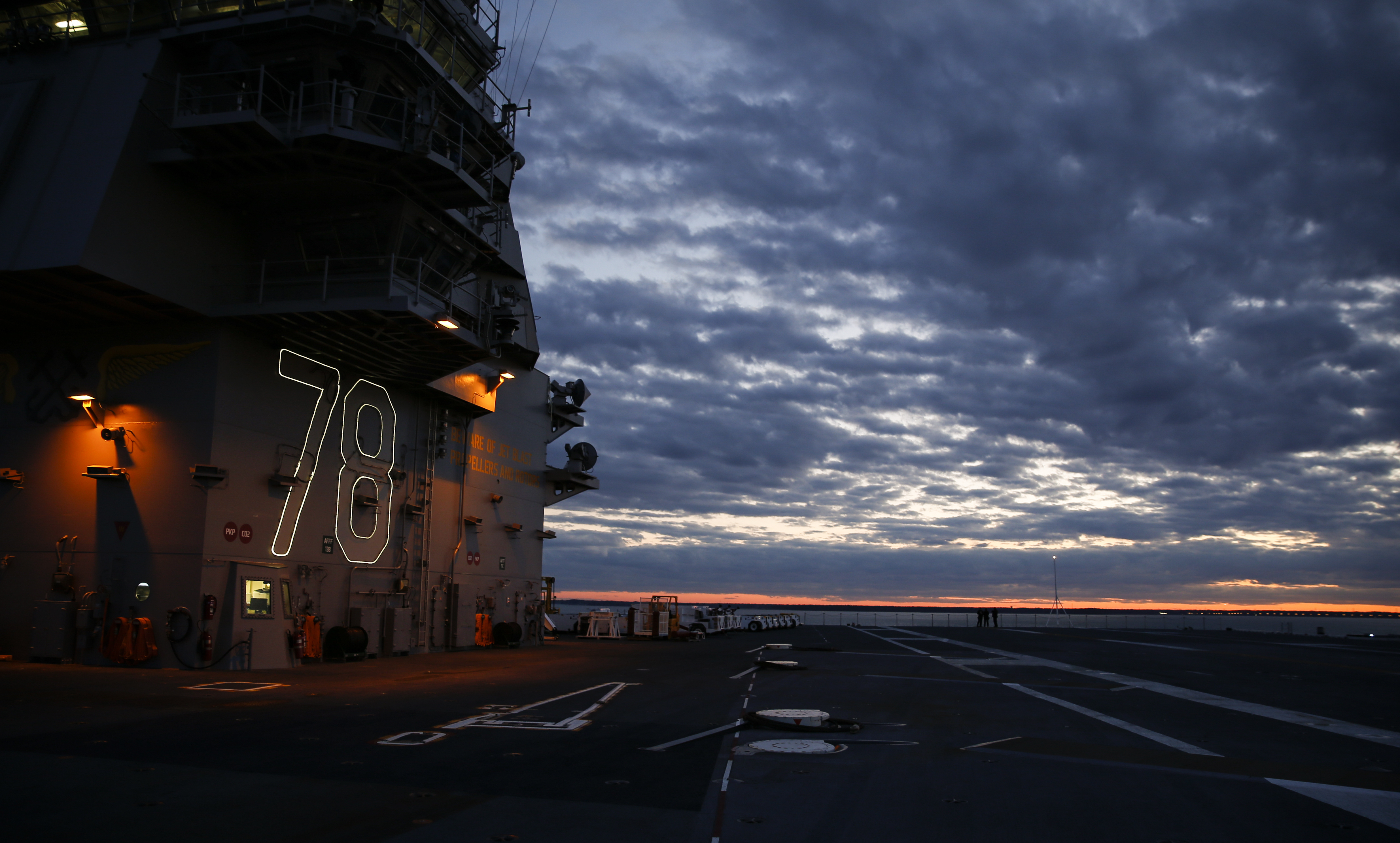
CVN-78 Full Ship Shock Trials
The committee included language in its bill that would pave the way for the Navy to postpone full ship shock trials on the first-in-class Gerald R. Ford (CVN-78) and instead shock test the second carrier, John F. Kennedy (CVN-79). Moulton offered another amendment to undo that language and force the Navy to test Ford before allowing it to deploy overseas.
“Full ship shock trials play only a minor role in determining when the carrier will be available for its first deployment. The drivers of CVN-78’s schedule are primarily mandatory and necessary training and certification events for the crew, and the shock trial phase itself is only expected to take two to three months and provides invaluable information for when the ship sees combat,” he claimed, adding that deploying the ship without a shock trial would be “fraught with risks and potential costs.”
Rep. Jackie Speier (D-Calif.) agreeing, adding “it is the height of irresponsibility to send 4,300 crew members to sea on a $13-billion carrier with a host of new mission-critical systems that have yet to be tested for susceptibility to shock and battle damage. Really I can’t believe we’re having a debate on whether the Navy should test a new nuclear reactor to determine how it might fail under battle conditions.”
Ford will have several major new systems, including the Electromagnetic Aircraft Launching System (EMALS), Advanced Arresting Gear (AAG), Dual-Band Radar, improved weapons elevators and an advanced nuclear reactor. The rest of the Ford-class carriers will keep four of those technologies but will ditch the radar and instead use the same Enterprise Air Surveillance Radar as the amphibious assault ship Bougainville (LHA-8) and follow ships.
Wittman pushed back hard, saying “getting this ship to theater is critical, especially with the delays we’ve had with this ship and us being at 10 carriers now.”
“The Navy has already gone through and shock tested every major subcomponent on the ship. The Navy also has at its avail today new technology through modeling and simulation to do shock trialing in a new and innovative way that it’s never done before,” he said.
“Today we hear constantly of carrier gaps, of not having carriers in certain areas for months on end. The Navy has stated if they are required to shock CVN-78 it will delay the availability on a rotational basis of CVN-78 by two years. So we can go down this road or we can look at the data that’s there and understand that the Navy has done the responsible thing in shocking these major subcomponents and doing virtual shocking, which gives them very very good information, is very highly reliable, and making sure too we look at where we are with the current gaps in carrier availability.”
USNI News previously reported that the Navy believed Ford would be delayed by two years if it had to undergo shock trials – partly due to uncertainty about how long a maintenance period it would need afterwards to fix everything that broke, and partly because it would then have to be scheduled into the Optimized Fleet Response Plan that dictates carrier strike group deployments, and surface combatants readied to deploy alongside it.
“There’s a window of uncertainty there as to how significant is the shock trial, how well is the ship going to do? It’s a brand new ship. Why do you do a shock trial? You do it because it’s a brand new class of ship. If it goes to design then nothing breaks and you don’t have that two years. But if a lot of things end up needing to be repaired then it’s going to be longer. So it’s pretty uncertain, it’s a big window,” then-director of fleet readiness (OPNAV N43) Capt. Thom Burke told USNI News in 2015.
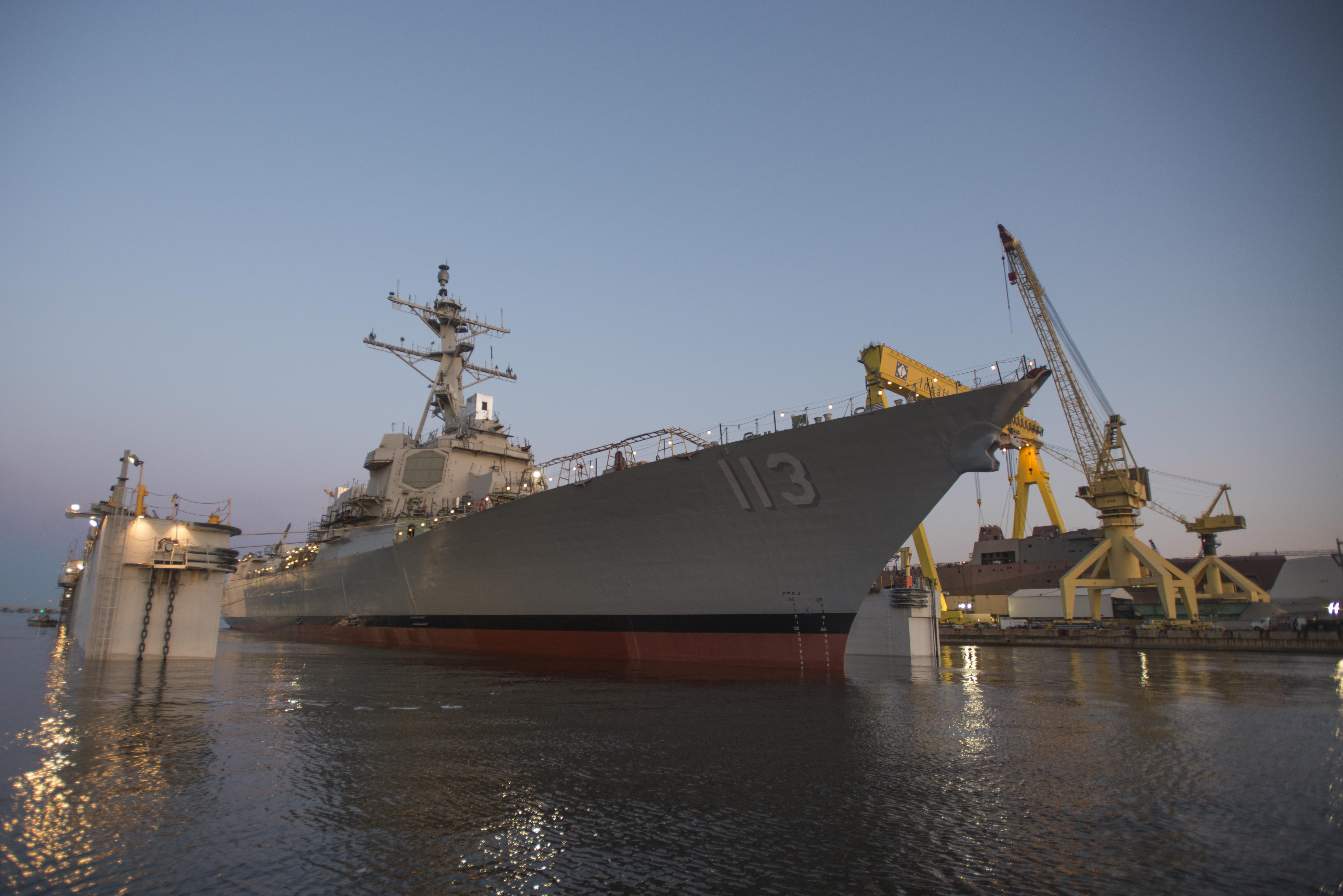
Move to Flight III DDG Design
Another item in the defense bill requires that at least two of the last three destroyers the Navy bought – one from FY 2016 and two from 2017 – be built to the Flight III configuration that includes the AN/SPY-6(v) Air and Missile Defense Radar. An amendment included in a non-controversial “en bloc package” would have stipulated that the Navy secretary could waive this requirement if “if the Secretary determines that the cost or schedule risk associated with the integration of the AN/SPY-6(V) air and missile defense radar is unacceptable or incongruous with a business case that relies on stable design, technology maturity, and realistic cost and schedule estimates.”
Rep. Donald Norcross (D-N.J.) offered an amendment to reduce the requirement to one DDG and therefore not need that waiver, to “ensure we’re not overstepping on shipbuilding negotiations.”
The Navy and DDG-builder Ingalls Shipbuilding have officially agreed upon the terms of Ingalls’ upgrade to Flight III. The other builder, Bath Iron Works, is still negotiating over the terms of the agreement, and the yard told USNI News previously that the risk of beginning Flight III with an incomplete design was still too high. Therefore, under Norcross’s amendment, Ingalls installing the AMDR on its ship would have satisfied the requirement, and BIW would have been free to continue its negotiations with the Navy for as long as it took to reach an agreement.
Norcross and allies on the committee argued that the Navy, as one of two parties negotiating the contract, would have an unfair advantage if it had the sole ability to sign the waiver relieving BIW of having to insert the Flight III design into a 2017.
“It would not limit the use of the new radar. We encourage the use, and the best thing that could happen for all of us is for the system to go in place without a hiccup; we just need to be ready in the event it isn’t,” he said, voicing support for the new radar and the capabilities it brings.
Opponents of the amendment, including Wittman, said the first amendment that added the SECNAV waiver did enough to strike a middle ground between keeping up some pressure to hurry and reach an agreement without disrupting the talks. Wittman called the waiver a “proper middle ground,” and ultimately the Norcross amendment was voted down.
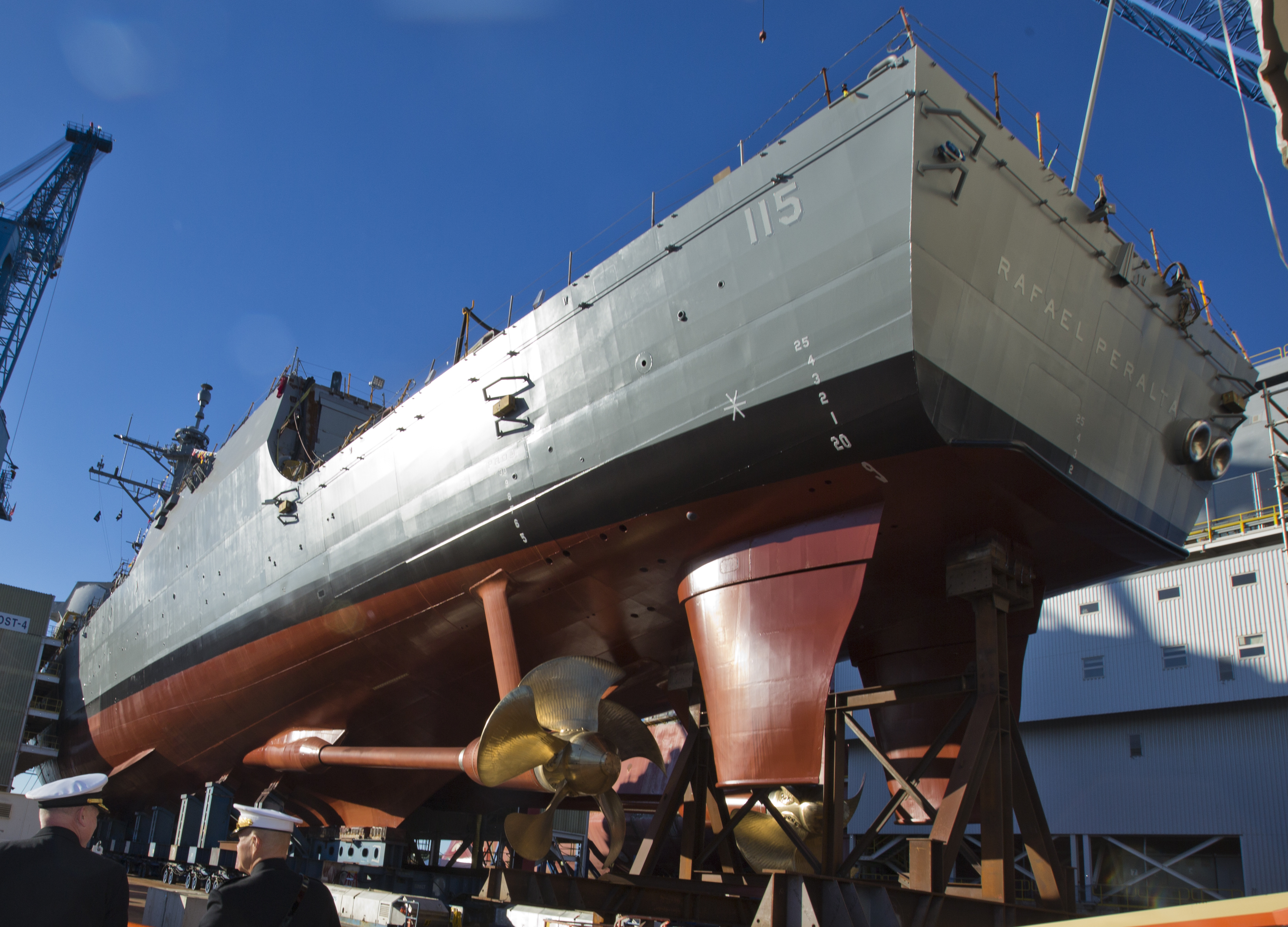
Still, seapower subcommittee ranking member Rep. Joe Courtney (D-Conn.) voiced great concern that forcing Flight III on BIW before the shipyard was ready would break the yard.
“To cut to the chase here, what we’re talking about is Bath Iron Works, which is the shipyard that is really going to be negotiating for those two DDGs that are in question here. Huntington Ingalls has already agreed to move forward with the AMDR radar system. Bath Iron Works is in the middle of negotiations right now. They are a fragile shipyard. It’s not in my district, but I do know enough about it; when they were required to produce the Zumwalt-class destroyers, the DDG-1000s, which was a truncated program, that has caused incredible disruption in terms of just the operations of that shipyard. What the mark is going to require of Bath is really to take on a new modification with again an unclear path forward in terms of what the Navy is offering to pay for it,” he said.
“I do think the industrial base issue is something that this committee has to be just totally focused on, and unfortunately the subcommittee mark I think really puts at risk the Bath shipyard.”
Courtney added later in the debate that “the problem with that language is that the negotiations right now are taking place between Bath Iron Works and the Navy, and to say that the Secretary of the Navy is going to waive a provision that would hurt the industrial base, you’re talking about the same entity that they’re negotiating with. … It’s like a cul-de-sac, you’re really going right back to the same party that you just negotiated with that’s forcing you to accept a system that the industrial base is not capable of implementing,” Courtney said.
“What I don’t think Congress should be doing is inserting itself into that process and forcing an outcome.”





